Archives
-

Vol. 1 No. 12 (2024)
Issue 12 of IJETAA features an innovative research article advancing the field of computational imaging through deep learning applications. The study, authored by Ziran Wei, Jianlin Zhang, Wei Du, and Zhiruo Wang, introduces a breakthrough in real-time single-pixel imaging technology. Through the integration of deep convolutional neural networks and novel four-channel parallel processing methods, the research achieves real-time video capture at 256×256 resolution with 33 frames per second, addressing a longstanding challenge in the field. The researchers demonstrate significant improvements in both image quality and processing speed compared to traditional compressed sensing approaches. The work presents a comprehensive solution for real-time high-resolution imaging, with potential applications across medical imaging, surveillance systems, and other advanced imaging applications. This research exemplifies the journal's commitment to publishing transformative technological advances that bridge theoretical frameworks with practical implementations.
-
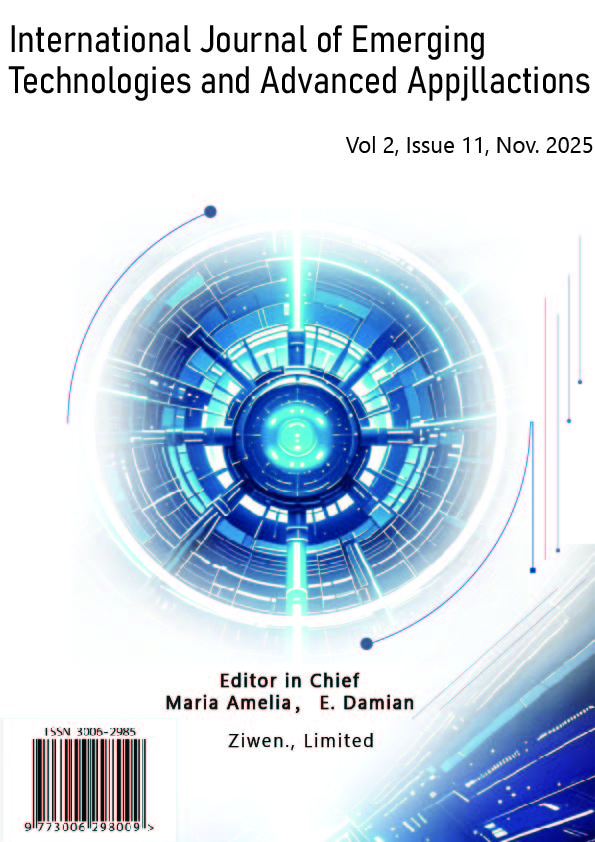
Vol. 2 No. 11 (2025)
We are pleased to present Issue 11 of the IJETAA. This issue presents the work of Velasco et al. on predicting the electrical performance of monocrystalline solar modules using artificial neural networks. Their optimized ANN architecture (4–7–7–2) successfully forecasts open-circuit voltage (Voc) and short-circuit current (Isc) under real outdoor conditions, achieving a correlation coefficient of R = 0.9531 based on environmental parameters including solar irradiance, temperature, and humidity. This data-driven approach offers valuable applications for PV system monitoring, performance evaluation, and predictive diagnostics in renewable energy installations.
-
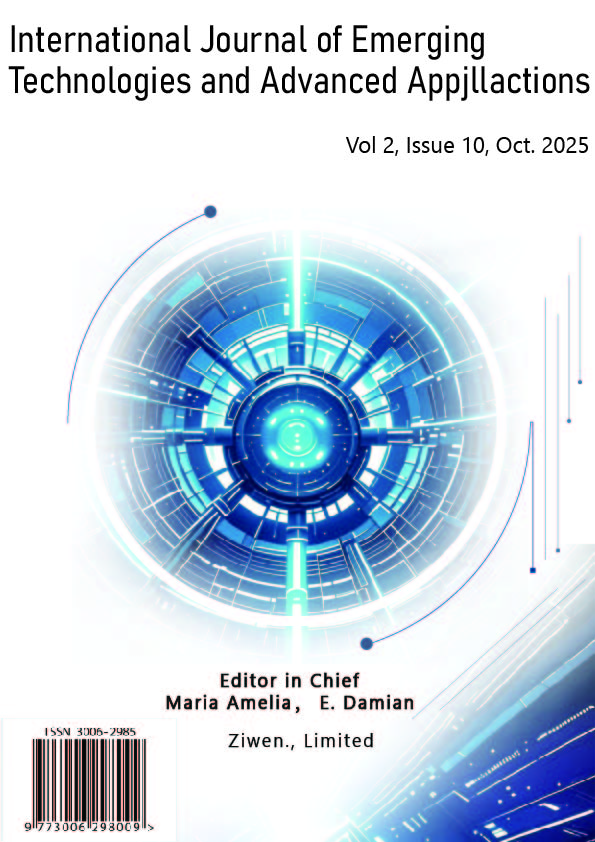
Vol. 2 No. 10 (2025)
The 10th issue of IJETAA features a groundbreaking study on intelligent PLC code generation for industrial automation. This issue presents a novel multi-agent system that leverages Large Language Models and Retrieval-Augmented Generation to automatically transform natural language requirements into cross-platform PLC code compliant with IEC 61131-3 standards. The featured research addresses critical challenges in traditional PLC programming by integrating four specialized collaborative agents with domain knowledge injection mechanisms and multi-layer verification processes. Experimental validation using a robotic arm refractory brick handling case demonstrates 90.3% compilation success rate and 73.3% development time reduction, showcasing the transformative potential of AI-driven approaches in industrial automation software development and offering valuable insights for advancing intelligent manufacturing technologies.
-
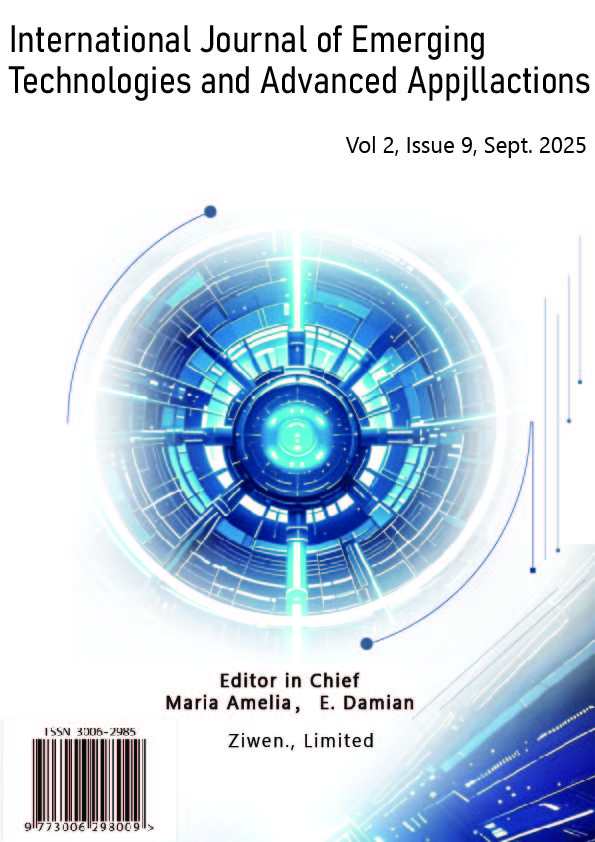
Vol. 2 No. 9 (2025)
This issue presents an innovative study on intelligent evaluation systems for higher vocational internship quality based on multi-source data fusion. The research addresses critical challenges in traditional internship assessment, including subjectivity, data fragmentation, and delayed feedback. By integrating student logs, enterprise evaluations, teacher feedback, and attendance records through advanced technologies such as K-means clustering and Natural Language Processing, the system enables personalized performance analysis and real-time monitoring. Empirical testing with 300 interns demonstrates significant improvements in internship-position matching and provides actionable insights for educational institutions. This work offers a reusable technical paradigm for the digital transformation of vocational education assessment systems.
-
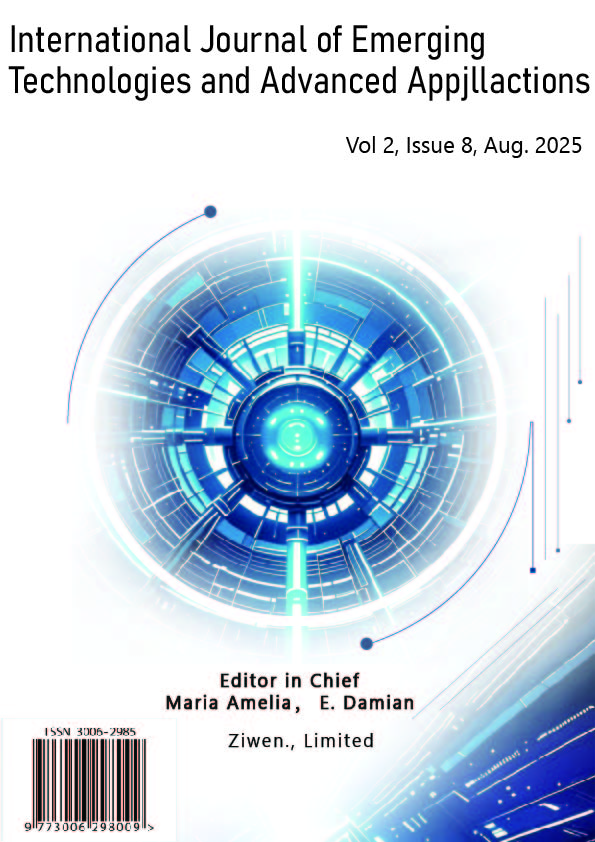
Vol. 2 No. 8 (2025)
This issue explores electrical performance analysis of hypersonic vehicle radomes under thermo-mechanical effects through finite element modeling, featuring integrated radome-antenna system evaluation under extreme flight conditions. The study addresses challenges where intense aerodynamic heating and mechanical loads affect radome materials, causing property changes that compromise antenna performance. The research integrates finite element analysis with thermo-mechanical coupling, developing a layered processing approach for temperature-dependent material variations and electrical parameter distribution. Using temperature characteristics from simulation, the methodology establishes layer-by-layer electrical mapping based on material temperature dependencies, providing realistic performance representation under high-temperature conditions. Experimental validation through antenna radiation analysis demonstrates excellent agreement with observations, confirming methodology accuracy. This research showcases computational electromagnetics' potential in aerospace engineering, providing solutions for hypersonic vehicle design optimization and advancing understanding of thermo-mechanical effects on electromagnetic system performance.
-
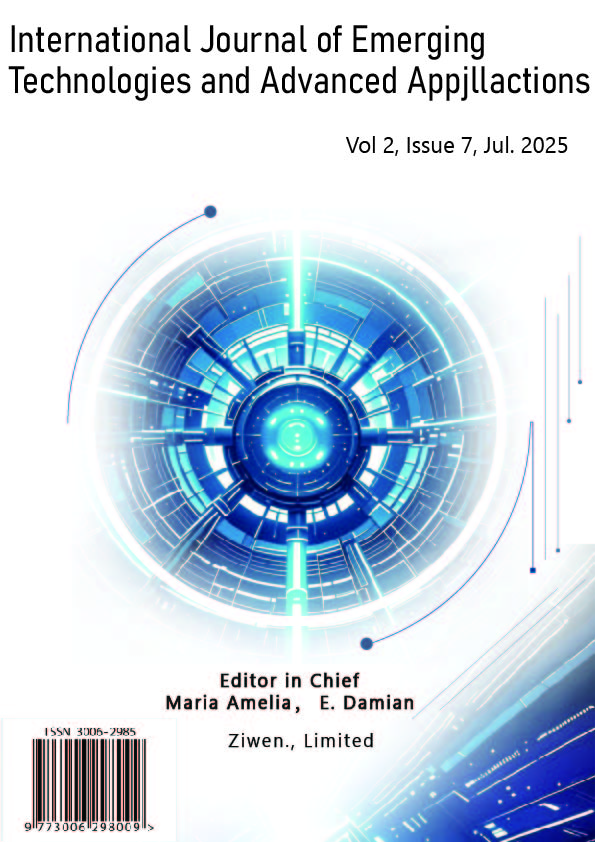
Vol. 2 No. 7 (2025)
This issue explores intelligent recruitment optimization in the hospitality sector through large language model-based resume-job matching algorithms, featuring pioneering research on position-specific adaptability in hotel industry hiring. The study addresses critical challenges in hotel recruitment where diverse talent requirements across different positions render traditional resume screening methods insufficient for complex matching demands. The research integrates LoRA fine-tuning techniques with BERT model domain adaptation and develops a multi-dimensional matching algorithm encompassing skills, experience, and soft skills evaluation. Using a comprehensive dataset of 1,847 historical recruitment records from 2014-2024 across six major hotel departments, experimental validation reveals significant performance variations: highly standardized positions achieve superior matching accuracy (front desk: 89.2%, housekeeping: 87.6%) compared to personalized roles (sales manager: 76.8%, F&B supervisor: 78.1%). The system demonstrates a remarkable 32.1 percentage point improvement in F1 score over traditional TF-IDF methods with statistical significance. This research showcases artificial intelligence's transformative potential in human resources management, providing practical solutions for intelligent recruitment systems and automated talent matching in service-intensive industries.
-
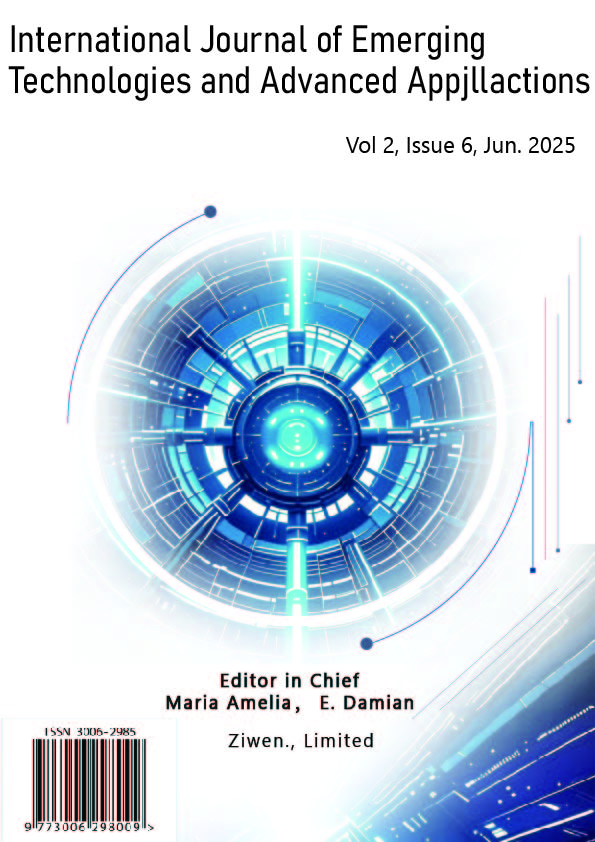
Vol. 2 No. 6 (2025)
This issue explores automated software quality assurance through intelligent code analysis, featuring groundbreaking research on comment consistency detection algorithms. The study addresses critical challenges in software evolution where code modifications often leave comments outdated, creating technical debt and increasing maintenance costs. The research integrates code-comment association graphs with AST-based differential analysis and natural language processing techniques to systematically identify inconsistencies using version control history. Experimental validation across five major open-source projects demonstrates exceptional performance: 89.6% precision, 92.3% recall, and only 6.2% false positive rate, significantly outperforming existing baseline methods. This research showcases artificial intelligence's transformative potential in software engineering practices, providing practical solutions for technical debt management and automated code quality control in modern development environments.
-

Vol. 2 No. 5 (2025)
This issue explores deep learning applications in intelligent manufacturing, featuring Xueli Liu's research on intelligent kiln car unstacking robots. The study integrates improved YOLOv8 vision recognition with TD3 path planning algorithms to address automation challenges in ceramics and building materials industries. Experimental results show impressive performance: 95.2% detection accuracy, 96.8% planning success rate, 73.5% efficiency improvement, and 89.2% error reduction compared to manual operations. This research demonstrates deep learning's transformative potential in complex industrial environments, providing valuable insights for Industry 4.0 implementations.
-
Vol. 2 No. 4 (2025)
We are pleased to present the fourth issue of our journal, featuring innovative research in artificial intelligence and machine learning. This issue highlights the comprehensive work by Xuebing Wang on multi-dimensional constraint-based test case generation for large language models. Wang's framework incorporates syntactic correctness, semantic consistency, task relevance, and boundary conditions through reinforcement learning optimization, achieving significant improvements in functional coverage and defect detection rates. This research provides the community with essential methodologies for systematic quality assurance and reliability testing of large-scale language models across diverse applications.
-

Vol. 2 No. 3 (2025)
We are pleased to present the third issue of our journal, featuring groundbreaking research on adaptive learning technologies in higher education administration.
Our highlight article by Jing Zuo explores an innovative approach to constructing adaptive learning paths for university administrative staff using large language models. This research demonstrates remarkable improvements in efficiency and effectiveness: a 20% reduction in learning time, 20.3% improvement in knowledge mastery, 19.4% enhancement in application ability, and an impressive 31.4% increase in knowledge retention compared to traditional methods. The study provides a comprehensive theoretical model and technical framework employing multidimensional learner modeling, knowledge tracking, and dynamic path generation algorithms to deliver personalized learning experiences.
This research represents an important advancement in intelligent education systems for administrative staff development. -

Vol. 2 No. 2 (2025)
The second issue of the International Journal of Emerging Technologies and Advanced Applications (IJETAA) for 2025 features a single cutting-edge research paper by Chuanyong Zhao and Yuan Xi . The article titled "Real-time Fault Detection and Stability Enhancement Mechanism Based on Large Models" presents an innovative framework for identifying system faults through advanced machine learning techniques.
The authors introduce a self-supervised learning approach that leverages transformer architecture and attention mechanisms to analyze system logs and operational data in real time. Their method demonstrates significant improvements over traditional approaches, reducing fault detection latency by 47.3% and system recovery time by 35.8%. This groundbreaking research offers valuable insights for enhancing reliability in distributed systems through continuous adaptation to emerging fault patterns.
IJETAA continues its commitment to showcasing pioneering technologies with this focused issue highlighting advancements in system reliability and large model applications.
-

Vol. 2 No. 1 (2025)
Welcome to the 2025 premiere of the International Journal of Emerging Technologies and Advanced Applications. This issue opens with a timely survey on deepfake detection, tackling AI-driven forgery’s threats to security and privacy. Exploring techniques from traditional feature analysis to advanced deep learning, large-scale models, and biometric methods, it addresses key challenges like adversarial samples and outlines future research paths. With keywords like Forgery Detection, Deep Learning, and Computer Vision, this work offers a critical resource for advancing digital authenticity. Dive in and join the quest for innovative solutions.
-

Vol. 1 No. 1 (2024)
Welcome to the latest issue of the International Journal of Emerging Technologies and Advanced Applications (IJETAA). Our newest edition showcases a collection of five exceptional articles at the forefront of technology and innovation. Each piece represents a significant contribution to the fields of knowledge graph construction, entity and relation extraction, automatic text labeling, network planning and design, and protocol entity extraction. These studies reflect the cutting-edge research and development efforts that define and drive the future of emerging technologies and their applications in various domains.
In this issue, you will find insightful research on:
- The construction of knowledge graphs for RFC protocols, offering a novel model that significantly improves the understanding and management of complex technical specifications.
- Advanced techniques for the joint extraction of entities and relations, utilizing multi-feature fusion to enhance information extraction processes.
- Innovative approaches to automatic text labeling with large language models, paving the way for more efficient and accurate data categorization.
- Strategic planning and design of university campus networks using GPON technology, providing a blueprint for next-generation network infrastructure.
- The application of few-shot learning in network protocol entity extraction, addressing the challenges of analyzing protocols with limited data.
These articles embody our commitment to disseminating research that not only advances the theoretical landscape but also offers practical solutions to contemporary challenges. We invite academics, professionals, and enthusiasts alike to explore the insights and innovations presented in this issue. Join us in navigating the exciting possibilities that lie at the intersection of technology and application.
Dive into our current issue to discover the latest contributions to the ever-evolving world of emerging technologies.
-

Vol. 1 No. 11 (2024)
Issue 11 of IJETAA features a compelling research article examining digital transformation in the pharmaceutical industry. The study, authored by Fang Wang and Norma G. Nunez, investigates operational model optimization at X Pharmaceutical Group during their digital transformation journey. Through detailed analysis, the research demonstrates how implementing smart supply chain platforms, digital marketing initiatives, and data-driven decision-making systems has enhanced operational efficiency. The authors address key challenges including data security and talent development, while providing actionable recommendations for pharmaceutical companies undertaking digital transformation. This work offers valuable insights for industry practitioners seeking to navigate the digital evolution of pharmaceutical operations.
-

Vol. 1 No. 10 (2024)
This Issue 10 presents groundbreaking research on retail sales forecasting, developing an innovative prediction framework for beer category management at Supermarket X through advanced big data analytics. The study combines an improved LSTM-based deep learning model with Attention Mechanisms to process diverse data streams including sales history, temperature variations, holiday patterns, and promotional activities, achieving remarkable accuracy rates up to 98% for monthly predictions. Real-world validation across five demonstration stores demonstrated the model's practical value, delivering substantial operational improvements including a 25% increase in inventory turnover, 35% reduction in stockout rates, and 15% decrease in operating costs. This research advances retail analytics by offering practical inventory management solutions while establishing a foundation for future developments in seasonal forecasting and extreme weather response strategies.
-

Vol. 1 No. 9 (2024)
IJETAA Issue 9 Now Available
We are pleased to announce the release of Issue 9 of the IJETAA. This issue features groundbreaking research on the integration of Virtual Reality technology in educational settings.
Explore our latest research examining how Virtual Reality technology transforms parental engagement in education. In "Bridging the Gap: Implementation and Impact of Virtual Reality Technology on Parental Educational Engagement," author Wenying Zhang presents compelling evidence from XX Youth Palace on VR's effectiveness in enhancing parent-school interactions. The study demonstrates significant improvements in participation rates and student outcomes, offering practical insights for educational institutions implementing VR solutions. This groundbreaking research provides valuable guidance for educators and administrators seeking to leverage technology for stronger school-family partnerships.
-

Vol. 1 No. 8 (2024)
We are pleased to present the 8th issue of our journal, featuring two significant papers exploring the applications of artificial intelligence in distinct business domains.
Jingran Sun's comprehensive study, "Research on the Application of Large Language Models in Human Resource Management Practices," examines the implementation of LLMs in core HR functions. Sun elucidates how these models enhance efficiency in recruitment, training, and performance management while addressing challenges such as data privacy and algorithmic bias.
Yun Luan's research, "Application of Artificial Intelligence in Corporate Financial Accounting," investigates the transformative potential of AI in finance. Luan explores how AI technologies improve financial data processing, reporting accuracy, and decision-making support in corporate accounting, while also discussing the challenges and ethical considerations of AI integration in financial systems.
These papers collectively offer valuable insights into the multifaceted applications of AI in business, providing a foundation for future research and practical implementation in both human resource management and financial accounting.
-

Vol. 1 No. 7 (2024)
Welcome to Issue 7 of the International Journal of Emerging Technologies and Advanced Applications. This issue features cutting-edge research at the intersection of technology and societal development, with a particular focus on the applications of big data and deep learning in urban and educational contexts.
Our first featured article, "Impact of Agricultural Big Data Analysis on Urban Development," explores the transformative potential of big data analytics in the agricultural sector and its ripple effects on urban planning and growth. This timely research illuminates how the integration of advanced data analysis techniques in agriculture can inform and shape sustainable urban development strategies.
The second highlight of this issue, "Campus Network Traffic Prediction and Anomaly Detection Based on Deep Learning," presents an innovative approach to enhancing cybersecurity in educational institutions. By leveraging deep learning algorithms, the authors propose a sophisticated method for predicting network traffic patterns and detecting potential security threats in campus networks, contributing to the ongoing efforts to create safer and more efficient digital learning environments.
These two articles exemplify the journal's commitment to publishing research that bridges theoretical advancements with practical applications, offering valuable insights for both academics and practitioners in the fields of data science, urban planning, and network security.
We invite our readers to engage with these thought-provoking studies and consider their implications for future technological and urban landscapes. As always, we welcome your feedback and look forward to continuing our mission of disseminating cutting-edge research in emerging technologies and their applications.
-

Vol. 1 No. 6 (2024)
Welcome to the 6th issue of the International Journal of Emerging Technologies and Advanced Applications. This edition features two pioneering articles:
- "Leveraging Emerging Technologies in Pricing Strategies and Consumer Behavior: Case Studies from China's Innovative Markets" by Lifeng Wang and Christi Blandina Aldave explores how AI, machine learning, and big data analytics are transforming business practices in China.
- "Design and Application of Artificial Neural Network Algorithm for Digital Speckle Correlation Method" by Lili Li and Joan P. Lazaro presents an innovative application of AI in materials science and engineering.
These studies showcase diverse applications of emerging technologies, offering valuable insights for researchers and practitioners alike.
-

Vol. 1 No. 5 (2024)
Welcome to the 5th issue of the International Journal of Emerging Trends in Advanced Analytics (IJETAA). In this issue, we present groundbreaking research that explores innovative solutions and reviews in the realms of digital empowerment and simulation technology. These articles reflect our commitment to showcasing pioneering work that bridges technology and real-world applications.
Innovative Paths for Digital Empowerment in Rural Revitalization of Ethnic Minority AreasAuthors: Wen Ren, Feng Qi, Wei Tong
DOI: 10.62677/IJETAA.2405118In this insightful article, Ren, Qi, and Tong delve into the transformative role of digital technologies in the revitalization of rural areas inhabited by ethnic minorities. The authors highlight how strategic digital interventions can empower these communities, fostering sustainable development and bridging the digital divide. The study provides a comprehensive analysis of various innovative paths and technologies that can drive socio-economic growth in underrepresented regions. By focusing on real-world applications and success stories, this research underscores the potential of digital empowerment as a catalyst for inclusive development.
A Comprehensive Review of Simulation Technology: Development, Methods, Applications, Challenges, and Future TrendsAuthor: Tao Luan
DOI: 10.62677/IJETAA.2405119Tao Luan offers a thorough review of the evolution and impact of simulation technology across various sectors. This article provides a detailed examination of the development stages of simulation technology, the diverse methods employed, and its wide-ranging applications in industries from aerospace to healthcare. Luan also addresses the critical challenges faced by practitioners and researchers, such as computational limitations and the need for high-fidelity models. Looking ahead, the paper discusses emerging trends that are poised to shape the future of simulation, including advancements in AI integration and real-time processing capabilities. This review serves as an essential resource for understanding the past, present, and future landscape of simulation technology.
-

Vol. 1 No. 4 (2024)
We are pleased to present the fourth issue of our journal, which features two insightful research articles and one comprehensive review. These articles explore diverse topics, including the use of geographic information systems and clustering algorithms to understand spatial patterns of violence against women and children, the potential of emerging technologies to enhance health capital and promote common prosperity, and a survey of network security traffic analysis and anomaly detection techniques.
In the first research article, titled "Spatial Patterns of Violence Against Women and Children using Geographic Information System and Density-Based Clustering Algorithm," the authors employ advanced geospatial analysis techniques to uncover patterns of violence against vulnerable populations. By leveraging geographic information systems and density-based clustering algorithms, the study provides valuable insights into the spatial distribution of these incidents, enabling policymakers and stakeholders to develop targeted interventions and support systems.
The second research article, "Enhancing Health Capital and Promoting Common Prosperity from the Perspective of Emerging Technologies," explores the potential of cutting-edge technologies to improve health outcomes and promote social equity. The authors discuss how innovations such as artificial intelligence, telemedicine, and personalized medicine can contribute to building health capital and fostering inclusive growth. The article highlights the importance of harnessing these technologies responsibly to ensure that their benefits are accessible to all segments of society.
In the review article, "A Survey on Network Security Traffic Analysis and Anomaly Detection Techniques," the authors provide a comprehensive overview of the latest approaches and methodologies used in network security. The survey covers various aspects of traffic analysis and anomaly detection, including machine learning-based techniques, statistical methods, and hybrid approaches. The article serves as a valuable resource for researchers and practitioners working in the field of network security, offering insights into the state-of-the-art techniques and future research directions.
We hope that this issue of the journal will stimulate further research and discussion on these important topics. We invite our readers to explore these articles in depth and share their thoughts and perspectives with the research community.
-

Vol. 1 No. 3 (2024)
In this third issue of the IJETAA, we present a diverse collection of research articles and reviews spanning robotics, computer vision, intelligent systems, blockchain technology, and warehouse management.
In the research section, we explore an improved ant colony algorithm for mobile robot path planning, a multi-view approach to video object-level splicing localization, the development and application of a large model-based intelligent customer service system, and a case study on optimizing hotel financial processes using blockchain technology at T Group.
Our review article delves into the latest advancements in warehouse management information system technology, providing valuable insights for professionals in the field.
These articles showcase the breadth and depth of research being conducted in the areas of emerging technologies and their applications across various industries. We hope that this issue will inspire further research and innovation in these exciting fields.
-

Vol. 1 No. 2 (2024)
We are delighted to present to you the second issue of the IJETAA. This issue encapsulates a diverse range of research articles that delve into cutting-edge advancements in various domains of analytics and artificial intelligence.
In this issue, we feature five insightful articles that contribute significantly to the advancement of analytical methodologies and applications:
-
Spatial Distribution Analysis of Urban Retail Industry Using POI Big Data: This article explores the spatial distribution patterns of urban retail industries by leveraging Point of Interest (POI) big data. The research sheds light on the dynamics of retail establishments in urban environments, offering valuable insights for urban planners and businesses alike.
-
YOLOLayout: Multi-Scale Cross Fusion Former for Document Layout Analysis: Presenting YOLOLayout, a novel approach for document layout analysis that utilizes a multi-scale cross fusion former. This research addresses the challenge of accurately extracting structural information from diverse document layouts, thereby facilitating automated document processing systems.
-
Joint Information Extraction Model Based on Feature Sharing: Introducing a joint information extraction model that leverages feature sharing to enhance performance. This model demonstrates the efficacy of collaborative learning in information extraction tasks, paving the way for improved text mining and knowledge discovery.
-
Interpretable DeepFake Detection Based on Frequency Spatial Transformer: Delving into the realm of deepfake detection, this article proposes an interpretable approach based on a frequency spatial transformer. By analyzing frequency-based features, the proposed method enhances the interpretability of deepfake detection models, thus bolstering trust and reliability in content authentication systems.
-
Prompt Optimization Methods for Large Language Models with Long Text Input: Addressing the challenges associated with large language models and long text inputs, this research presents prompt optimization methods to improve model performance. By optimizing prompts for specific tasks and inputs, this approach enhances the effectiveness and efficiency of large language models in diverse applications.
Each of these articles contributes to the growing body of knowledge in advanced analytics and artificial intelligence, offering innovative solutions to real-world challenges. We extend our gratitude to the authors for their valuable contributions and to our reviewers for their meticulous evaluation.
We hope that the articles featured in this issue will inspire further research and spark meaningful discussions in the field of advanced analytics. We invite you to delve into the depth of knowledge presented in these articles and explore the possibilities they unfold.
-
